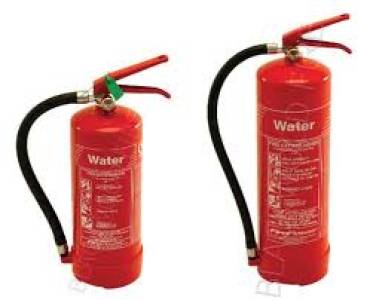Description
Water type fire extinguishers are a reliable and cost-effective solution for combating Class A fires – those involving ordinary combustible materials like wood, paper, cloth, and some plastics. These extinguishers are a staple in homes, offices, and various industrial settings, providing a simple yet effective method for extinguishing fires before they escalate.
How They Work:
Water fire extinguishers work by cooling the burning material below its ignition temperature, effectively extinguishing the fire. The water absorbs heat, turning into steam and disrupting the combustion process. Their simplicity makes them easy to use, even for untrained individuals in emergency situations.
Key Features and Benefits:
- Effective against Class A Fires: Specifically designed for ordinary combustible materials, ensuring effective fire suppression.
- Cost-Effective: Water fire extinguishers are generally less expensive than other types, making them an accessible option for various budgets.
- Easy to Use: Simple operation makes them suitable for everyone, regardless of prior experience with fire extinguishers. Most feature a simple lever or pump mechanism.
- Environmentally Friendly: Water is a naturally occurring and biodegradable extinguishing agent, minimizing environmental impact.
- Wide Range of Sizes and Capacities: Available in various sizes, from small handheld units ideal for homes to larger, wheeled models suitable for commercial applications.
- Simple Maintenance: Regular inspection and pressure checks are relatively straightforward, ensuring the extinguisher remains operational.
Important Considerations:
- Not suitable for all fire types: Never use a water extinguisher on Class B (flammable liquids) or Class C (energized electrical equipment) fires. Using water on these types of fires can spread the flames or cause electrical shock.
- Potential for damage: While effective, water can cause damage to sensitive electronics and certain materials. Consider this before deploying on valuable equipment.
- Requires proper training: Although easy to use, proper training on fire extinguisher operation and safety procedures is essential for effective and safe usage.
- Regular inspection and maintenance: Regular checks of pressure and condition are crucial to ensure the extinguisher functions correctly in an emergency.
Choosing the Right Water Fire Extinguisher:
The appropriate size and type of water extinguisher will depend on the specific risks and environment. Factors to consider include:
- The size of the area to be protected.
- The types of potential fire hazards present.
- The number of occupants.
